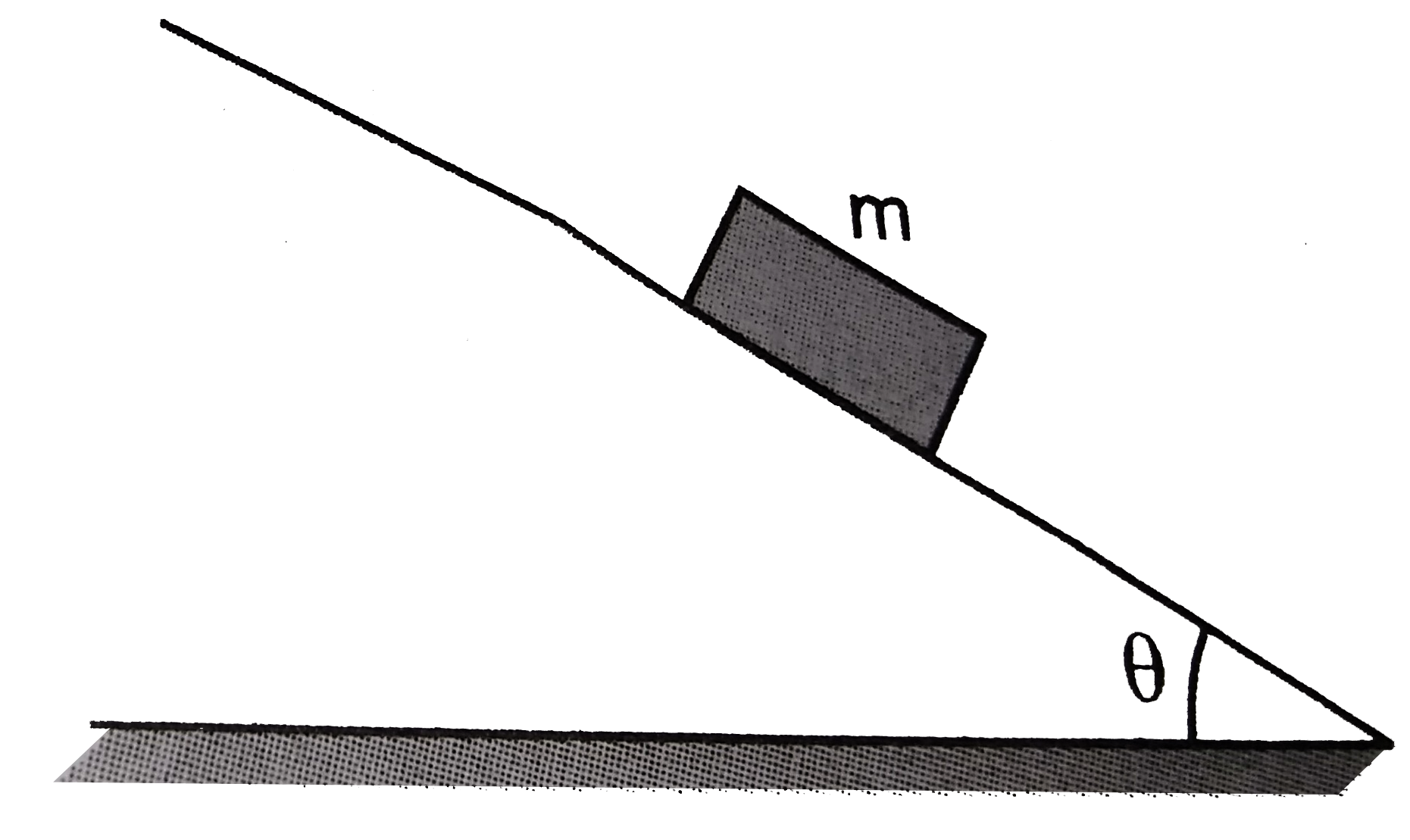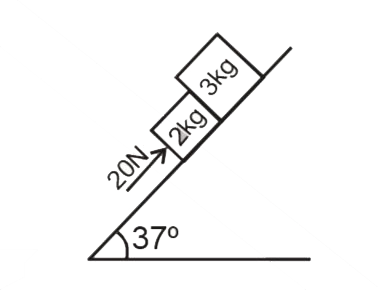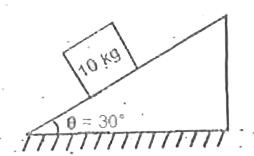A block is kept on a smooth inclined plane of angle of inclination 30∘ that moves with a constant acceleration so that the block does not slide relative to the inclined plane. Let F1 be the the contact force between the block and the plane . Now the inclined plane stops and let F2 be the contact force between the two in this case. Then, F1/F2 is
1
43
2
32
The correct Answer is:B
To solve the problem, we need to analyze the forces acting on the block in both scenarios: when the inclined plane is accelerating and when it stops.
Step 1: Analyze the forces when the inclined plane is accelerating (F1)
1. Identify the forces acting on the block:
- Gravitational force (weight) acting downwards: W=mg
- Normal force F1 acting perpendicular to the inclined plane.
- The inclined plane is accelerating with some acceleration a.
2. Resolve the weight into components:
- The component of weight acting parallel to the inclined plane: W∥=mgsin(30∘)=mg2
- The component of weight acting perpendicular to the inclined plane: W_{\perpendicular} = mg \cos(30^\circ) = mg \cdot \frac{\sqrt{3}}{2}
3. Apply Newton's second law:
- In the direction parallel to the incline, since the block does not slide, the net force is zero:
Fnet=ma=F1−W∥
ma=F1−mg2
- Rearranging gives:
F1=ma+mg2
Step 2: Analyze the forces when the inclined plane stops (F2)
1. Identify the forces acting on the block when the inclined plane stops:
- The gravitational force W=mg acting downwards.
- Normal force F2 acting perpendicular to the inclined plane.
2. Resolve the weight into components:
- The component of weight acting parallel to the inclined plane remains the same: W∥=mg2
- The component of weight acting perpendicular to the inclined plane remains the same: W_{\perpendicular} = mg \cdot \frac{\sqrt{3}}{2}
3. Apply Newton's second law:
- In the direction perpendicular to the incline, the net force is zero when the inclined plane stops:
F_2 = W_{\perpendicular} = mg \cdot \frac{\sqrt{3}}{2}
Step 3: Compare F1 and F2
1. Find the ratio F1F2:
- From the expressions derived:
F1=ma+mg2
F2=mg⋅√32
2. Express F1 in terms of F2:
- Since F2 is dependent on mg, we can express F1 in terms of F2:
F1F2=ma+mg2mg⋅√32
Conclusion
The ratio F1F2 will depend on the acceleration a of the inclined plane. However, since F1 includes the term ma, it suggests that F1 will generally be greater than F2 unless a is zero.
- Gravitational force (weight) acting downwards: W=mg
- Normal force F1 acting perpendicular to the inclined plane.
- The inclined plane is accelerating with some acceleration a.
- The component of weight acting parallel to the inclined plane: W∥=mgsin(30∘)=mg2
- The component of weight acting perpendicular to the inclined plane: W_{\perpendicular} = mg \cos(30^\circ) = mg \cdot \frac{\sqrt{3}}{2}
- In the direction parallel to the incline, since the block does not slide, the net force is zero:
Fnet=ma=F1−W∥
ma=F1−mg2
- Rearranging gives:
F1=ma+mg2
- The gravitational force W=mg acting downwards.
- Normal force F2 acting perpendicular to the inclined plane.
- The component of weight acting parallel to the inclined plane remains the same: W∥=mg2
- The component of weight acting perpendicular to the inclined plane remains the same: W_{\perpendicular} = mg \cdot \frac{\sqrt{3}}{2}
- In the direction perpendicular to the incline, the net force is zero when the inclined plane stops:
F_2 = W_{\perpendicular} = mg \cdot \frac{\sqrt{3}}{2}
- From the expressions derived:
F1=ma+mg2
F2=mg⋅√32
- Since F2 is dependent on mg, we can express F1 in terms of F2:
F1F2=ma+mg2mg⋅√32
Similar Questions
Knowledge Check
A block is kept on a smooth inclined plane of angle of inclination θ that moves wuth a contact acceleration so that the block does not slide relative to the inclined plane. If the inclined plane stops the normal contact force offered by the plane on the block changes by a factor
AtanθBtan2θCcos2θDcotθA block of mass 10kg is pushed up on a smooth incline plane of inclination 30∘, so that it has acceleration 2m/s2. The applied force is
A50 NB60 NC70 ND80 NA block is stationary on an inclined plane If the coefficient of friction between the block and the plane is μ then
 .Aμ>tanθBf=mgsinθCf=μmgcosθDthe reaction of the ground on the block is mg cos θ
.Aμ>tanθBf=mgsinθCf=μmgcosθDthe reaction of the ground on the block is mg cos θ
A block of mass m is at rest on a rough inclined plane of angle of inclination θ. If coefficient of friction between the block and the inclined plane is μ, then the minimum value of force along the plane required to move the block on the plane is
View SolutionBlocks In Contact On An Inclined Plane
View SolutionAn object is kept on a smooth inclined plane of height 1 unit and length l units. The horizontal acceleration to be imparted to the inclined plane so that the object is stationary relative to the incline is
View SolutionA cubical block rests on an inclined plane of coefficient of friction μ=1√3 . What should be the angle of inclination so that the block just slides down the inclined plane?
View SolutionA block of mass m is placed on a smooth inclined plane of inclination θ with the horizontal. The force exerted by the plane on the block has a magnitude
View Solution


